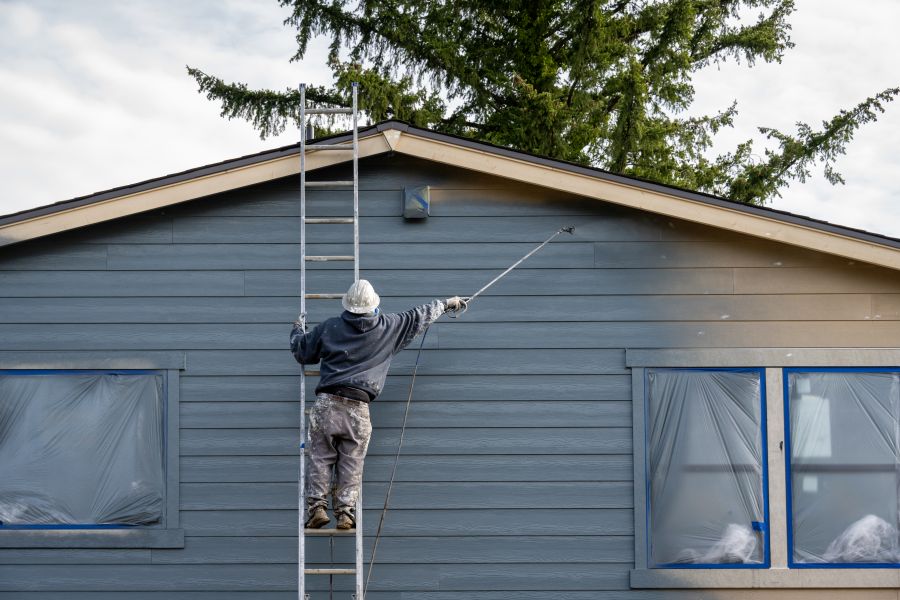
Seasonal Maintenance & Repainting Your Home’s Exterior
Winter snow is melting away, so your home's exterior paint is becoming more and more noticeable. You may be starting to see that it not only worsens or enhances your home’s curb appeal—but also it serves as a protective shield against the elements. We at 360 Painting know that over time, exposure to sun, rain, wind, and temperature changes can cause paint to fade, peel, or crack. Knowing when to call us in to repaint your home’s exterior is essential for maintaining its beauty and structural integrity. But what do you look for? Let’s explore the best seasons for repainting, signs your home needs a fresh coat, and how to time your project for the best results.
How Often Should You Repaint Your Home’s Exterior?
The lifespan of your exterior paint depends on factors like climate, material, and paint quality. Here’s a general guideline for how often you should repaint:
- Wood Siding: Every 3–7 years
- Stucco: Every 5–10 years
- Aluminum or Vinyl Siding: Every 10–15 years
- Brick (if painted): Every 15–20 years
If your home shows signs of wear before these time frames, it may be time for a new coat of paint. Give 360 Painting a call!
Signs It’s Time to Repaint Your Home
Not sure if your home needs a repaint? Look for these common indicators:
- ✔ Fading Color: Sun exposure can cause paint to fade, making your home look dull and worn.
- ✔ Peeling or Cracking Paint: This exposes surfaces to moisture, leading to potential damage.
- ✔ Mildew or Mold Growth: Humid climates can cause mold buildup, which needs to be addressed before repainting.
- ✔ Chalky Residue: If you rub your hand against the paint and it leaves a chalky film, the paint is breaking down.
- ✔ Warping or Rotting Wood: Peeling paint can expose wood siding to moisture, leading to rot.
If you notice any of these issues, it’s best to have us repaint sooner rather than later to prevent costly repairs.
Best Seasons to Repaint Your Home’s Exterior
Choosing the right season to repaint is crucial for proper drying and durability. Here’s a breakdown of the best and worst times to tackle this project:
✅ Best Time to Repaint: Spring & Fall
- Mild Temperatures: Ideal for paint adhesion and drying.
- Lower Humidity: Prevents issues like bubbling or streaking.
- Stable Weather: Less chance of rain or extreme heat interfering with the process.
⚠️ Avoid Repainting in Summer & Winter
- Summer: While dry conditions are great, extreme heat can cause paint to dry too fast, leading to cracks or uneven application.
- Winter: Cold temperatures prevent paint from curing properly, which can affect durability and adhesion.
For optimal results, choose days with temperatures between 50°F and 85°F with low humidity.
Protect and Enhance Your Home with a Fresh Coat of Paint
Repainting your home’s exterior is an important part of seasonal maintenance that protects your investment and keeps your home looking its best. As you have read, spring is an opportune time. By paying attention to wear and tear, you can ensure a long-lasting, beautiful finish. Still not sure if your home’s exterior needs to be refreshed? Give 360 Painting a call and we’ll get you squared away! 🏡✨
3-1-2025




